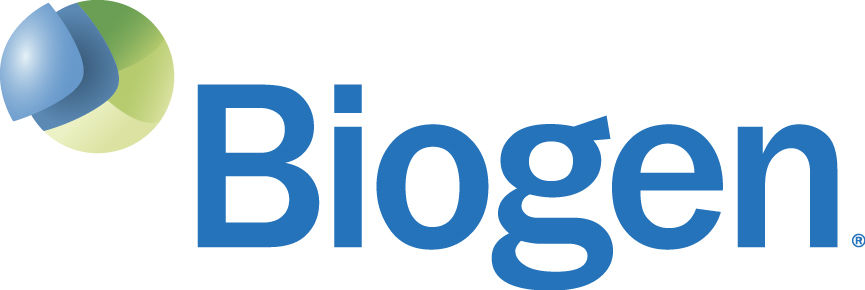Request Demo
Last update 08 May 2025
Viral fusion proteins x CD4
Last update 08 May 2025
Basic Info
Related Targets |
Related
2
Drugs associated with Viral fusion proteins x CD4Mechanism CD4 inhibitors [+1] |
Active Org. |
Originator Org. |
Active Indication |
Inactive Indication- |
Drug Highest PhaseApproved |
First Approval Ctry. / Loc. United States |
First Approval Date06 Mar 2018 |
Mechanism CD4 inhibitors [+1] |
Active Org. |
Originator Org. |
Active Indication |
Inactive Indication- |
Drug Highest PhaseDiscovery |
First Approval Ctry. / Loc.- |
First Approval Date20 Jan 1800 |
10
Clinical Trials associated with Viral fusion proteins x CD4NCT05890963
Phase 1b Single Dose Clinical Trial of a Novel Long-Acting Bispecific Antibody in People With HIV to Inform Development for HIV Pre- and Post-Exposure Prophylaxis
This is an open-label phase 1b clinical trial enrolling people living with HIV (PLWH) who are antiretroviral therapy (ART)-naïve or have not been on ART for > 24 weeks. This study will enroll PLWH to assess the safety, tolerability, and antiviral effect of bispecific and long-acting bNAbs, alone and in combination. The study will be conducted as a single center study at National Institute for Medical Research-Mbeya Medical Research Center (NIMR-MMRC) in Mbeya, Tanzania.
20 PLWH will be sequentially enrolled into one of 5 arms, each arm comprised of 4 participants. Sequential enrollment will occur in the following order:
* Arm 1 will receive standard daily oral ART.
* Arm 2 will receive a single dose of 10E8.4/iMab 600mg intravenous injection (IV).
* Arm 3 will receive a single dose of 10E8.4/iMab 600mg intramuscular injection (IM).
* Arm 4 will receive a single dose of 10E8.4/iMab 1800mg IV.
* Arm 5 will receive a single dose of combination therapy with both 10E8.4/iMab 1800mg IV and VRC07-523LS 1200mg IV.
20 PLWH will be sequentially enrolled into one of 5 arms, each arm comprised of 4 participants. Sequential enrollment will occur in the following order:
* Arm 1 will receive standard daily oral ART.
* Arm 2 will receive a single dose of 10E8.4/iMab 600mg intravenous injection (IV).
* Arm 3 will receive a single dose of 10E8.4/iMab 600mg intramuscular injection (IM).
* Arm 4 will receive a single dose of 10E8.4/iMab 1800mg IV.
* Arm 5 will receive a single dose of combination therapy with both 10E8.4/iMab 1800mg IV and VRC07-523LS 1200mg IV.
Start Date28 Nov 2023 |
Sponsor / Collaborator |
NCT05495204
External Comparison of Effectiveness of Ibalizumab in Clinical Trials vs. Other HTE Regimens in OPERA
Among heavily treatment experienced people living with HIV, the virologic effectiveness of ibalizumab + optimized background regimen from two clinical trials will be compared to non-ibalizumab-containing regimens in routine clinical care in the OPERA cohort.
Start Date05 Aug 2022 |
Sponsor / Collaborator  Epividian, Inc. Epividian, Inc. [+1] |
100 Clinical Results associated with Viral fusion proteins x CD4
Login to view more data
100 Translational Medicine associated with Viral fusion proteins x CD4
Login to view more data
0 Patents (Medical) associated with Viral fusion proteins x CD4
Login to view more data
34
Literatures (Medical) associated with Viral fusion proteins x CD401 Feb 2020·Cytokine
A distinct double positive IL-17A+/F+ T helper 17 cells induced inflammation leads to IL17 producing neutrophils in Type 1 reaction of leprosy patients
Article
Author: Srivastava, Rupesh K ; Sharma, Alpana ; Saini, Chaman ; Ramesh, V ; Kumar, Praveen
01 Aug 2019·VirologyQ3 · MEDICINE
A unique combination adjuvant modulates immune responses preventing vaccine-enhanced pulmonary histopathology after a single dose vaccination with fusion protein and challenge with respiratory syncytial virus
Q3 · MEDICINE
Article
Author: Ko, Eun-Ju ; Graham, Barney S ; Kwon, Young-Man ; Hwang, Hye Suk ; Kang, Sang Moo ; Kim, Ki-Hye ; Lee, Young-Tae ; Lee, Youri
01 Dec 2018·Pathology International
Recurrent monomorphic epitheliotropic intestinal T‐cell lymphoma with aberrant CD20 expression: An implication for anti‐CD20 (rituximab) antibody therapy?
Letter
Author: Chuang, Shih‐Sung ; Wang, Ming‐Chung ; Chou, Shih‐Cheng ; Liao, Pi‐Han ; Huang, Wan‐Ting ; Su, Ying‐Zhen
Analysis
Perform a panoramic analysis of this field.
login
or

AI Agents Built for Biopharma Breakthroughs
Accelerate discovery. Empower decisions. Transform outcomes.
Get started for free today!
Accelerate Strategic R&D decision making with Synapse, PatSnap’s AI-powered Connected Innovation Intelligence Platform Built for Life Sciences Professionals.
Start your data trial now!
Synapse data is also accessible to external entities via APIs or data packages. Empower better decisions with the latest in pharmaceutical intelligence.
Bio
Bio Sequences Search & Analysis
Sign up for free
Chemical
Chemical Structures Search & Analysis
Sign up for free


